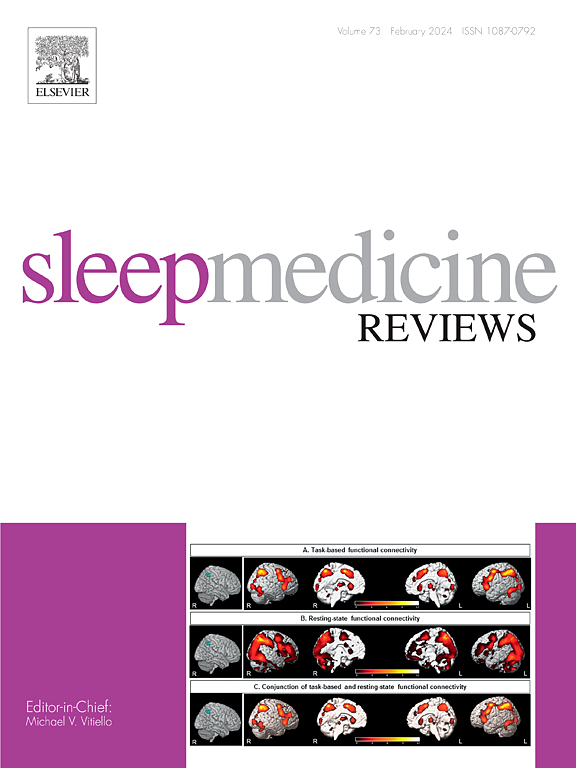阻塞性睡眠呼吸暂停、细胞衰老和衰老之间的机制联系:心脏代谢功能障碍的作用。
IF 9.7
1区 医学
Q1 CLINICAL NEUROLOGY
引用次数: 0
摘要
阻塞性睡眠呼吸暂停(OSA)是一种常见的疾病,其特征是睡眠期间气道反复阻塞,引发类似细胞衰老关键特征的生理变化——氧化应激、线粒体功能障碍和全身性炎症。虽然衰老在组织修复中发挥作用,但它的积累也会导致慢性炎症和免疫失调。阻塞性睡眠呼吸暂停、衰老和衰老之间的联系仍然很复杂,尚未得到充分研究。衰老相关分泌表型(SASP)、免疫监测受损和再生能力降低等机制可能导致osa相关的发病率。本文综述了衰老如何影响OSA的免疫和分子途径,重点关注心脏代谢功能障碍、sasp驱动的组织重塑和缺氧诱导的损伤。我们还强调了针对衰老的新疗法,提出它不仅是衰老的副产品,而且是OSA病理的积极驱动因素,由缺氧、睡眠中断、合并症和免疫谱形成。本文章由计算机程序翻译,如有差异,请以英文原文为准。
Mechanistic links between obstructive sleep apnea, cellular senescence and aging: The role of cardiometabolic dysfunction
Obstructive sleep apnea (OSA) is a common condition characterized by repeated airway obstruction during sleep, triggering physiological changes that resemble key features of cellular senescence—oxidative stress, mitochondrial dysfunction, and systemic inflammation. While senescence plays roles in tissue repair, its accumulation also drives chronic inflammation and immune dysregulation. The connection between OSA, senescence, and aging remains complex and underexplored. Mechanisms like the senescence-associated secretory phenotype (SASP), impaired immune surveillance, and reduced regenerative capacity may contribute to OSA-related morbidity. This review examines how senescence influences immune and molecular pathways in OSA, with a focus on cardiometabolic dysfunction, SASP-driven tissue remodeling, and hypoxia-induced damage. We also highlight emerging therapies targeting senescence, proposing that it acts not only as a byproduct of aging but as an active driver of OSA pathology, shaped by hypoxia, sleep disruption, comorbidities, and immune profiles.
求助全文
通过发布文献求助,成功后即可免费获取论文全文。
去求助
来源期刊

Sleep Medicine Reviews
医学-临床神经学
CiteScore
20.10
自引率
3.80%
发文量
107
期刊介绍:
Sleep Medicine Reviews offers global coverage of sleep disorders, exploring their origins, diagnosis, treatment, and implications for related conditions at both individual and public health levels.
Articles comprehensively review clinical information from peer-reviewed journals across various disciplines in sleep medicine, encompassing pulmonology, psychiatry, psychology, physiology, otolaryngology, pediatrics, geriatrics, cardiology, dentistry, nursing, neurology, and general medicine.
The journal features narrative reviews, systematic reviews, and editorials addressing areas of controversy, debate, and future research within the field.
 求助内容:
求助内容: 应助结果提醒方式:
应助结果提醒方式:


